Chelation therapy for atherosclerotic cardiovascular disease
- PMID: 32367513
- PMCID: PMC7198985
- DOI: 10.1002/14651858.CD002785.pub2
Chelation therapy for atherosclerotic cardiovascular disease
Abstract
Background: Chelation therapy is promoted and practiced around the world as a form of alternative medicine in the treatment of atherosclerotic cardiovascular disease. It has been suggested as a safe, relatively inexpensive, non-surgical method of restoring blood flow in atherosclerotic vessels. However, there is currently limited high-quality, adequately-powered research informing evidence-based medicine on the topic, specifically regarding clinical outcomes. Due to this limited evidence, the benefit of chelation therapy remains controversial at present. This is an update of a review first published in 2002.
Objectives: To assess the effects of ethylene diamine tetra-acetic acid (EDTA) chelation therapy versus placebo or no treatment on clinical outcomes among people with atherosclerotic cardiovascular disease.
Search methods: For this update, the Cochrane Vascular Information Specialist searched the Cochrane Vascular Specialised Register, Cochrane Central Register of Controlled Trials (CENTRAL), MEDLINE, Embase and Cumulative Index to Nursing and Allied Health Literature (CINAHL) databases, the World Health Organization International Clinical Trials Registry Platform and ClinicalTrials.gov trials register to 6 August 2019. We searched the bibliographies of the studies retrieved by the literature searches for further trials.
Selection criteria: We included studies if they were randomised controlled trials of EDTA chelation therapy versus placebo or no treatment in participants with atherosclerotic cardiovascular disease. The main outcome measures we considered include all-cause or cause-specific mortality, non-fatal cardiovascular events, direct or indirect measurement of disease severity, and subjective measures of improvement or adverse events.
Data collection and analysis: Two review authors independently extracted data and assessed trial quality using standard Cochrane procedures. A third author considered any unresolved issues, and we discussed any discrepancies until a consensus was reached. We contacted study authors for additional information.
Main results: We included five studies with a total of 1993 randomised participants. Three studies enrolled participants with peripheral vascular disease and two studies included participants with coronary artery disease, one of which specifically recruited people who had had a myocardial infarction. The number of participants in each study varied widely (from 10 to 1708 participants), but all studies compared EDTA chelation to a placebo. Risk of bias for the included studies was generally moderate to low, but one study had high risk of bias because the study investigators broke their randomisation code halfway through the study and rolled the placebo participants over to active treatment. Certainty of the evidence, as assessed by GRADE, was generally low to very low, which was mostly due to a paucity of data in each outcome's meta-analysis. This limited our ability to draw any strong conclusions. We also had concerns about one study's risk of bias regarding blinding and outcome assessment that may have biased the results. Two studies with coronary artery disease participants reported no evidence of a difference in all-cause mortality between chelation therapy and placebo (risk ratio (RR) 0.97, 95% CI 0.73 to 1.28; 1792 participants; low-certainty). One study with coronary artery disease participants reported no evidence of a difference in coronary heart disease deaths between chelation therapy and placebo (RR 1.02, 95% CI 0.70 to 1.48; 1708 participants; very low-certainty). Two studies with coronary artery disease participants reported no evidence of a difference in myocardial infarction (RR 0.81, 95% CI 0.57 to 1.14; 1792 participants; moderate-certainty), angina (RR 0.95, 95% CI 0.55 to 1.67; 1792 participants; very low-certainty), and coronary revascularisation (RR 0.46, 95% CI 0.07 to 3.25; 1792 participants). Two studies (one with coronary artery disease participants and one with peripheral vascular disease participants) reported no evidence of a difference in stroke (RR 0.88, 95% CI 0.40 to 1.92; 1867 participants; low-certainty). Ankle-brachial pressure index (ABPI; also known as ankle brachial index) was measured in three studies, all including participants with peripheral vascular disease; two studies found no evidence of a difference in the treatment groups after three months after treatment (mean difference (MD) 0.02, 95% CI -0.03 to 0.06; 181 participants; low-certainty). A third study reported an improvement in ABPI in the EDTA chelation group, but this study was at high risk of bias. Meta-analysis of maximum and pain-free walking distances three months after treatment included participants with peripheral vascular disease and showed no evidence of a difference between the treatment groups (MD -31.46, 95% CI -87.63 to 24.71; 165 participants; 2 studies; low-certainty). Quality of life outcomes were reported by two studies that included participants with coronary artery disease, but we were unable to pool the data due to different methods of reporting and varied criteria. However, there did not appear to be any major differences between the treatment groups. None of the included studies reported on vascular deaths. Overall, there was no evidence of major or minor adverse events associated with EDTA chelation treatment.
Authors' conclusions: There is currently insufficient evidence to determine the effectiveness or ineffectiveness of chelation therapy in improving clinical outcomes of people with atherosclerotic cardiovascular disease. More high-quality, randomised controlled trials are needed that assess the effects of chelation therapy on longevity and quality of life among people with atherosclerotic cardiovascular disease.
Copyright © 2020 The Cochrane Collaboration. Published by John Wiley & Sons, Ltd.
Conflict of interest statement
MVVS: the host institution received a minimal grant from the Philippine College of Physicians to assist the review authors to complete the review. The grant included payment for utilities used ‐ a faster local internet service, and meeting and communication expenses. RF: none known ALD: is an investigator in the Rivaroxaban for the Prevention of Major Cardiovascular Events in Coronary or Peripheral Artery Disease (COMPASS) trial which is funded by Bayer. FNT: none known DVS: is an investigator in the Rivaroxaban for the Prevention of Major Cardiovascular Events in Coronary or Peripheral Artery Disease (COMPASS) trial which is funded by Bayer.
Figures
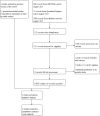
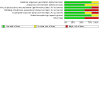
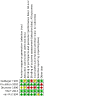
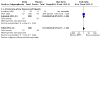
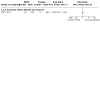
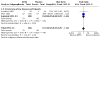
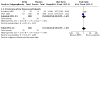
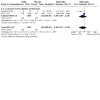
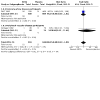
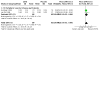
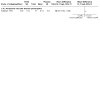
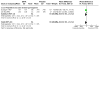
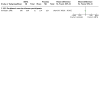
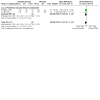
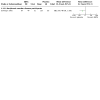
Update of
-
Chelation therapy for atherosclerotic cardiovascular disease.Cochrane Database Syst Rev. 2002;(4):CD002785. doi: 10.1002/14651858.CD002785. Cochrane Database Syst Rev. 2002. Update in: Cochrane Database Syst Rev. 2020 May 5;5:CD002785. doi: 10.1002/14651858.CD002785.pub2. PMID: 12519577 Updated.
References
References to studies included in this review
Guldager 1992 {published data only}
-
- Guldager B, Faergeman O, Jorgensen SJ, Nexo E, Jelnes R. Disodium-ethylene diamine tetraacetic acid (EDTA) has no effect on blood lipids in atherosclerotic patients. A randomized, placebo-controlled study. Danish Medical Bulletin 1993;40(5):625-7. - PubMed
-
- Guldager B, Jelnes R, Jorgensen SJ, Nielsen JS, Klaerke A, Mogensen K, et al. EDTA treatment of intermittent claudication - a double-blind, placebo-controlled study. Journal of Internal Medicine 1992;231(3):261-7. - PubMed
-
- Guldager B, Jelnes R, Jorgensen SJ, Sloth-Nielsen J, Klaerke A, Mogensen K, et al. EDTA versus placebo treatment in intermittent claudication. A double-blind randomized trial [EDTA versus placebobehandling af claudicatio intermittens]. Ugeskrift for Laeger 1992;154(23):1618-21. - PubMed
-
- Guldager B, Jorgensen PJ, Grandjean P. Metal excretion and magnesium retention in patients with intermittent claudication treated with intravenous disodium EDTA. Clinical Chemistry 1996;42(12):1938-42. - PubMed
-
- Sloth-Nielsen J, Guldager B, Mouritzen C, Lund EB, Egebland M, Norregaard O, et al. Arteriographic findings in EDTA chelation therapy on peripheral arteriosclerosis. American Journal of Surgery 1991;162(2):122-5. - PubMed
Knudston 2002 {published data only}
-
- Anderson TJ, Hubacek J, Wyse DG, Knudtson ML. Effect of chelation therapy on endothelial function in patients with coronary artery disease: PATCH substudy. Journal of the American College of Cardiology 2003;41(3):420-5. - PubMed
-
- Knudston ML, Wyse DG, Galbraith PD, Brant R, Hildebrand K, Paterson D, et al. Chelation therapy for ischemic heart disease: a randomized trial. Journal of the American Medical Association 2002;287:481-6. - PubMed
Olszewer 1990 {published data only}
TACT 2013 {published data only}
-
- Drisko J, Alexander KP, Roberts RS, Chappell LT, Lee KL, Boineau R, et al. Post-myocardial infarction treatment with edetate disodium was safe in the trial to assess chelation therapy. Circulation 2015;132 (Suppl 3):A10466.
-
- Escolar E, Lamas GA, Mark DB, Boineau R, Goertz C, Rosenberg Y, et al. The effect of an EDTA-based chelation regimen on patients with diabetes mellitus and prior myocardial infarction in the Trial to Assess Chelation Therapy (TACT). Circulation: Cardiovascular Quality and Outcomes 2014;7(1):15-24. - PMC - PubMed
-
- Escolar E, Lamas GA. Clinical benefit of EDTA chelation therapy in patients with diabetes in the trial to assess chelation therapy (TACT). Circulation 2013;128(22 Suppl 1):A11546.
-
- Issa OM, Roberts R, Mark DB, Boineau R, Goertz C, Rosenberg Y, et al. Effect of high-dose oral multivitamins and minerals in participants not treated with statins in the randomized Trial to Assess Chelation Therapy (TACT). American Heart Journal 2018;195:70-7. - PubMed
-
- Lamas GA, Boineau R, Goertz C, Mark DB, Rosenberg Y, Stylianou M, et al. EDTA chelation therapy alone and in combination with oral high-dose multivitamins and minerals for coronary disease: the factorial group results of the Trial to Assess Chelation Therapy. American Heart Journal 2014;168(1):37-44. - PMC - PubMed
van Rij 1994 {published data only}
-
- Rij A, Soloman C, Packer S, Hopkins W. Chelation therapy for intermittent claudication: a double-blind randomised controlled trial. New Zealand Medical Journal 1998;111:17. - PubMed
-
- Rij AM, Solomon C, Packer SG, Hopkins WG. Chelation therapy for intermittent claudication: a double-blind, randomized, controlled trial. Circulation 1994;90(3):1194-9. - PubMed
References to studies excluded from this review
TACT‐PAD {published data only}
-
- NCT03424746. Chelation therapy in diabetic patients with critical limb ischemia (TACT-PAD). clinicaltrials.gov/ct2/show/NCT03424746 (first received 7 February 2018).
References to ongoing studies
TACT2 {published data only}
-
- NCT02733185. Trial to assess chelation therapy 2 (TACT2). clinicaltrials.gov/ct2/show/NCT02733185 (first received 11 April 2016).
TACT3a {published data only}
-
- NCT03982693. Trial to assess chelation therapy in critical limb ischemia (TACT3a). clinicaltrials.gov/ct2/show/NCT03982693 (first received 11 June 2019).
Additional references
Anderson 2003
-
- Anderson TJ, Hubacek J, Wyse DG, Knudtson ML. Effect of chelation therapy on endothelial function in patients with coronary artery disease: PATCH substudy. Journal of the American College of Cardiology 2003;41(3):420-5. - PubMed
Avila 2014
Aziz 2016
-
- Aziz M, Yadav KS. Pathogenesis of atherosclerosis. A review. Medical & Clinical Reviews 2016;2(3):22.
Bakic 2007
-
- Bakic M. Pathogenetic aspects of atherosclerosis. Acta Medica Medianae 2007;46(1):25-9.
Balshem 2011
-
- Balshem H, Helfand M, Schunemann HJ, Oxman AD, Kunz R, Brozek, et al. GRADE guidelines: 3. Rating the quality of evidence. Journal of Clinical Epidemiology 2011;64(4):401-6. - PubMed
Chappel 1994
-
- Chappel LT, Stahl JP, Evans R. EDTA chelation treatment for vascular disease: a meta-analysis using unpublished data. Journal of Advancement in Medicine 1994;7(3):131-42.
Clarke 1955
-
- Clarke NE, Clarke CN, Mosher RE. The "in vivo" dissolution of metastatic calcium. An approach to atherosclerosis. American Journal of Medical Sciences 1955;229(2):142-9. - PubMed
Clarke 1956
-
- Clarke NE, Clarke CN, Mosher RE. Treatment of angina pectoris with disodium ethylene diamine tetraacetic acid. American Journal of Medical Sciences 1956;232(6):654-66. - PubMed
Clarke 1960
-
- Clarke N. Atherosclerosis, occlusive vascular disease and EDTA. American Journal of Cardiology 1960;6(2):1-3. - PubMed
Ernst 1997
-
- Ernst E. Chelation therapy for peripheral arterial occlusive disease: a systematic review. Circulation 1997;96(3):1031-3. - PubMed
Goldberg 1972
-
- Goldberg D. The detection of psychiatric illness by questionnaire. London, England: Oxford University Press, Inc, 1972.
GRADEpro GDT [Computer program]
-
- McMaster University (developed by Evidence Prime) GRADEpro GDT. Version accessed 27 December 2018. Hamilton (ON): McMaster University (developed by Evidence Prime).Available at gradepro.org.
Green 1993
-
- Green S. Chelation Therapy: unproven claims and unsound theories. Nutrition Forum 1993.
Guldager 1993
-
- Guldager B, Faergeman O, Jorgensen SJ, Nexo E, Jelnes R. Disodium-ethylene diamine tetraacetic acid (EDTA) has no effect on blood lipids in atherosclerotic patients. A randomized, placebo-controlled study. Danish Medical Bulletin 1993;40(5):625-7. - PubMed
Guldager 1996
-
- Guldager B, Jorgensen PJ, Grandjean P. Metal excretion and magnesium retention in patients with intermittent claudication treated with intravenous disodium EDTA. Clinical Chemistry 1996;42(12):1938-42. - PubMed
Hiatt 1997
-
- Hiatt WR. Current and future drug therapies for claudication. Vascular Medicine 1997;2(3):257-62. - PubMed
Higgins 2011
-
- Higgins JP, Green S, editor(s). Cochrane Handbook for Systematic Reviews of Interventions Version 5.1.0 (updated March 2011). The Cochrane Collaboration, 2011. Available from handbook.cochrane.org.
Hlatky 1989
-
- Hlatky MA, Boineau RE, Higginbotham MB, Lee KL, Mark DB, Califf RM, et al. A brief self-administered questionnaire to determine functional capacity (the Duke Activity Status Index). Amercian Journal of Cardiology 1989;64(10):651-4. - PubMed
INTERHEART 2004
-
- Yusuf S, Hawken S, Ounpuu S on behalf of the INTERHEART Study Investigators. Effect of potentially modifiable risk factors associated with myocardial infarction in 52 countries (the INTERHEART study): case-control study. Lancet 2004;364:937-52. - PubMed
Lefebvre 2011
-
- Lefebvre C, Manheimer E, Glanville J. Chapter 6: Searching for studies. In: Higgins JP, Green S, editor(s). Cochrane Handbook for Systematic Reviews of Interventions Version 5.1.0 (updated March 2011). The Cochrane Collaboration, 2011. Available from handbook.cochrane.org.
McNair 1971
-
- McNair D, Lorr M, Droppleman LF. Manual for the profile of mood states. San Diego, USA: Educational and Industrial Testing Service, 1971.
Meltzer 1960
-
- Meltzer LE, Ural ME, Kitchell JR. The treatment of coronary artery disease with disodium EDTA. In: Metal-Binding in Medicine, edited by Seven MJ. Philadelphia: Lippincott, 1960.
Russell 1991
-
- Russell DG, Wilson NC. Life in New Zealand Commission Report I: Executive Overview. Dunedin, New Zealand: University of Otago, 1991.
Seely 2005
Sidhu 2013
-
- Sidhu MS, Saour BM, Boden WE. A TACTful reappraisal of chelation therapy in cardiovascular disease. Nature Reviews. Cardiology 2014;11(3):180-3. - PubMed
Sloth‐Nielsen 1991
-
- Sloth-Nielsen J, Guldager B, Mouritzen C, Lund EB, Egebland M, Norregaard O, et al. Arteriographic findings in EDTA chelation therapy on peripheral arteriosclerosis. American Journal of Surgery 1991;162(2):122-5. - PubMed
Spertus 1995
-
- Spertus JA, Winder JA, Dewhurst TA, Deyo RA, Prodzinski J, McDonell M, et al. Development and evaluation of the Seattle Angina Questionnaire: a new functional status measure for coronary artery disease. Journal of the American College of Cardiology 1995;25(2):334-41. - PubMed
Ujueta 2019
Walker 1997
-
- Walker M, Shah H. Everything you should know about chelation therapy. New Canaan, Connecticut: Keats Publishing, 1997.
Ware 1994
-
- Ware Jr JE, Kosinski M, Keller SD. SF-36 Physical and Mental Health Summary Scales: a user's manual.. Boston, USA: Health Assessment Lab, New England Medical Center, 1994.
Wilder 1962
-
- Wilder LW, De Jode LR, Milstein SW, Howard JM. Mobilization of atherosclerotic plaque calcium with EDTA utilizing the isolation-perfusion principle. Surgery 1962;52(5):793-5. - PubMed
Publication types
MeSH terms
Substances
Grants and funding
LinkOut - more resources
Full Text Sources

